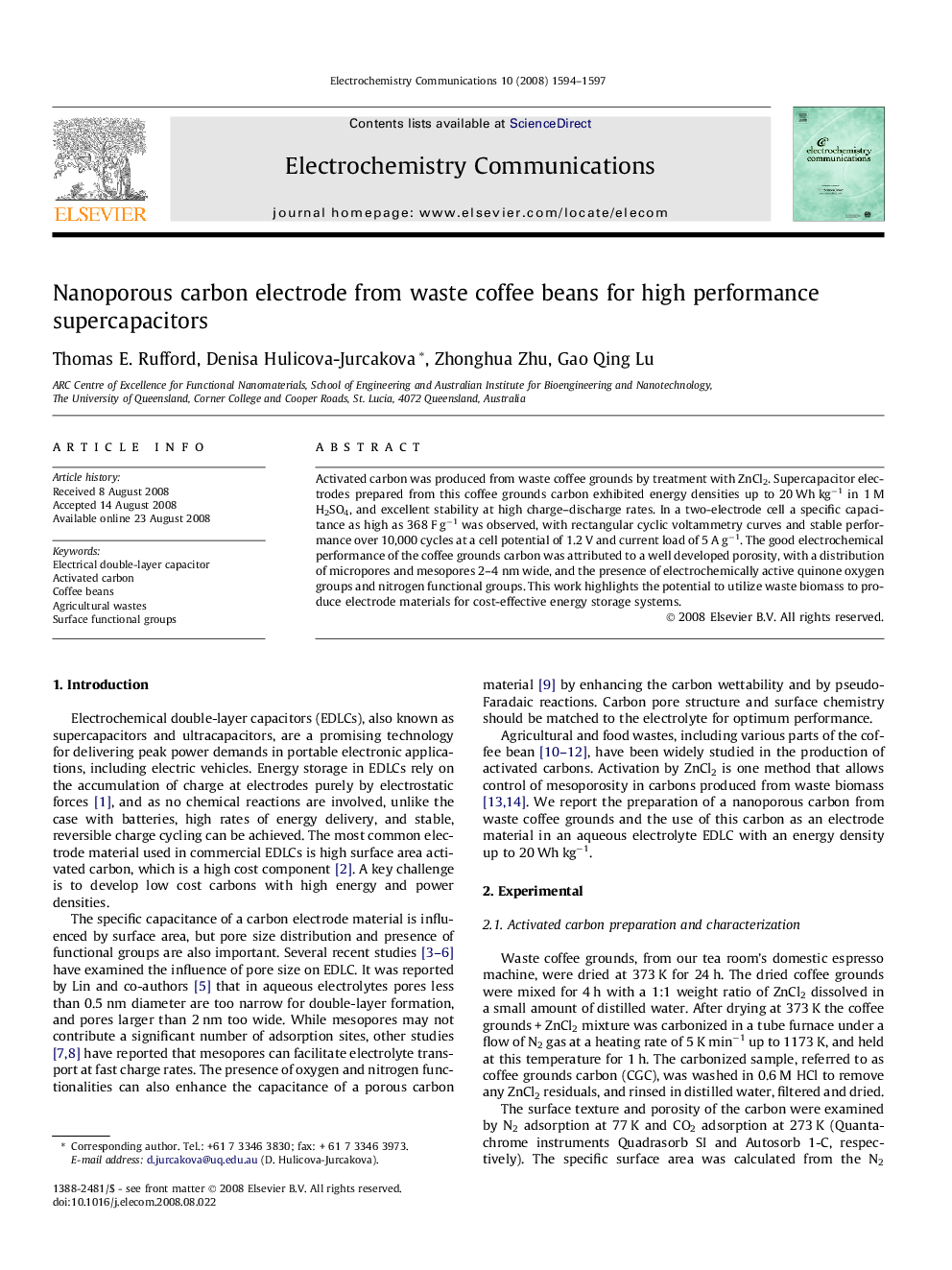| Article ID | Journal | Published Year | Pages | File Type |
|---|---|---|---|---|
| 181044 | Electrochemistry Communications | 2008 | 4 Pages |
Activated carbon was produced from waste coffee grounds by treatment with ZnCl2. Supercapacitor electrodes prepared from this coffee grounds carbon exhibited energy densities up to 20 Wh kg−1 in 1 M H2SO4, and excellent stability at high charge–discharge rates. In a two-electrode cell a specific capacitance as high as 368 F g−1 was observed, with rectangular cyclic voltammetry curves and stable performance over 10,000 cycles at a cell potential of 1.2 V and current load of 5 A g−1. The good electrochemical performance of the coffee grounds carbon was attributed to a well developed porosity, with a distribution of micropores and mesopores 2–4 nm wide, and the presence of electrochemically active quinone oxygen groups and nitrogen functional groups. This work highlights the potential to utilize waste biomass to produce electrode materials for cost-effective energy storage systems.
